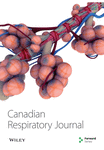Association between Proximity to Major Roads and Sputum Cell Counts
Abstract
BACKGROUND: Air pollution caused by motor vehicle emissions has been associated with exacerbations of obstructive airway diseases; however, the nature of the resulting bronchitis has not been quantified.
OBJECTIVE: To examine whether proximity to major roads or highways is associated with an increase in sputum neutrophils or eosinophils, and to evaluate the effect of proximity to roads on spirometry and exacerbations in patients with asthma.
METHODS: A retrospective study of 485 sputum cell counts from patients attending a tertiary chest clinic in Hamilton, Ontario, identified eosinophilic or neutrophilic bronchitis. Patients’ residences were geocoded to the street network of Hamilton using geographic information system software. Associations among bronchitis, lung function, and proximity to major roads and highways were examined using multinomial logistic and multivariate linear regression analyses adjusted for patient age, smoking status and corticosteroid medications.
RESULTS: Patients living within 1000 m of highways showed an increased risk of bronchitis (OR 3.8 [95% CI 1.0 to 13.7]; P<0.05), particularly neutrophilic bronchitis (OR 4.7 [95% CI 1.2 to 18.7]; P<0.05) as well as an increased risk of an asthma diagnosis (OR 1.9 [95% CI 1.0 to 3.4]; P<0.05). Patients living within 300 m of a major road were at increased risk for an asthma exacerbation (OR 1.9 [95% CI 1.5 to 15.5]; P<0.01) and lower lung function, particularly in women (P=0.036).
CONCLUSION: In patients with airway diseases, living close to a highway or major road was associated with neutrophilic bronchitis, an increased risk of asthma diagnosis, asthma exacerbations and lower lung function.




